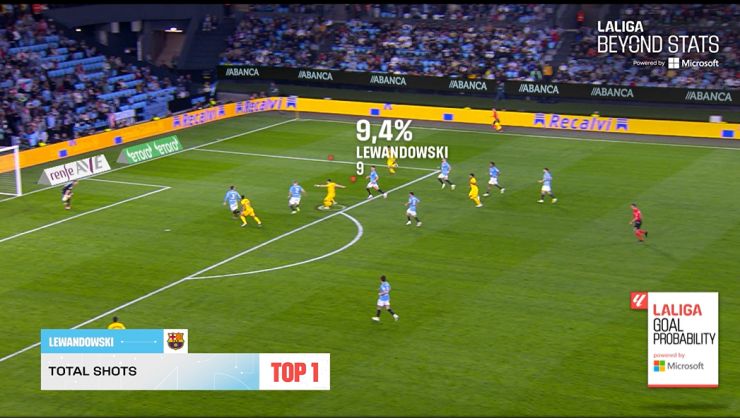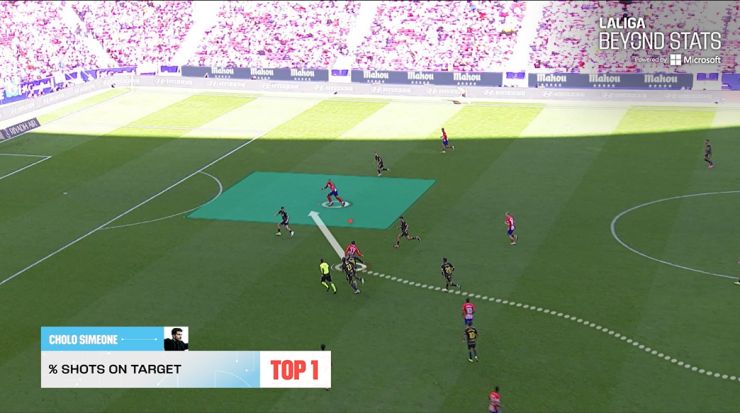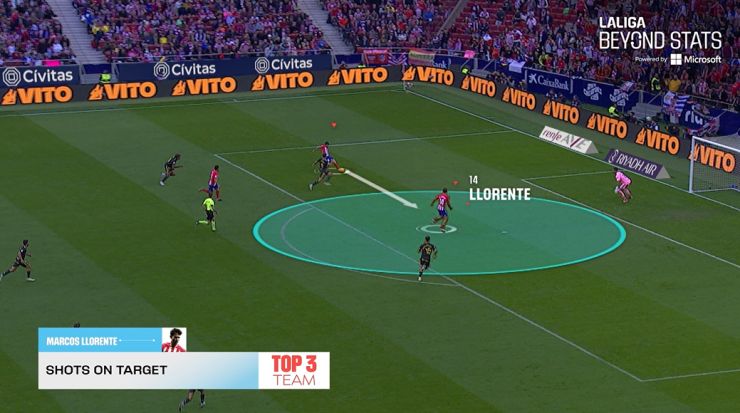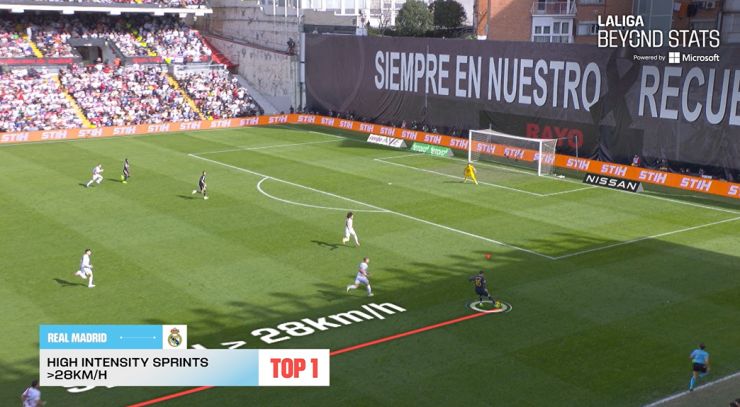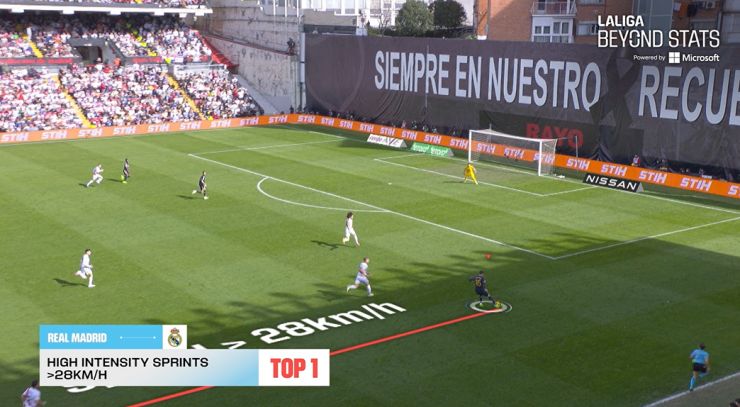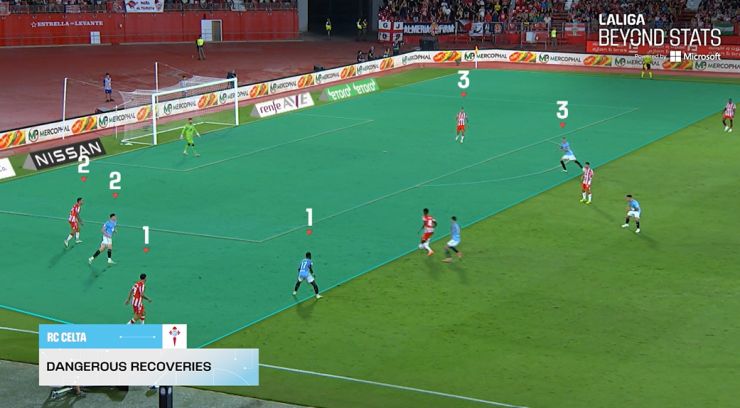Beyond Stats ofrece métricas increíbles en la industria del fútbol: no se limita a recopilar los datos que se suelen usar para los análisis estándarque llegan a los aficionados, sino que va más allá, recopilando una cantidad ingente de información durante el partido, casi en tiempo real, gracias a la herramienta Mediacoach de LALIGA, que es capaz de revelar nuevas percepciones sobre el juego a un nivel más profundo permitiendo trazar patrones y obtener proyecciones de futuro.
Los datos brutos recogidos (Raw Data) son tratados para su análisis por un equipo multidisciplinar compuesto por expertos en Business Intelligence & Analytics y análisis futbolístico de LALIGA a través de procesos de Machine Learning e Inteligencia Artificial que se han hecho posibles gracias a la tecnología Azure que provee Microsoft, capaz de procesar grandes volúmenes de datos. Tras su tratamiento, se genera un algoritmo que permite la visualización de las métricas que llegan al aficionado por medio de Beyond Stats. Estas estadísticas permiten a los aficionados entender mejor por qué su equipo ha ganado un partido, lo ha perdido, o tener una visión panorámica de su rendimiento y expectativas, lo que permite una inmersión inédita en la experiencia del espectador de fútbol.
En todos los estadios de LALIGA encontramos hasta dieciséis cámaras perimetrales fijas de alta resolución para el tracking óptico que siguen en el terreno de juego la situación de jugadores, árbitros y balón, recogiendo datos físicos y técnico-tácticos a un ritmo vertiginoso de 25 veces por segundo.
“Encontramos hasta dieciséis cámaras perimetrales fijas de alta resolución para el tracking óptico”
Estos dispositivos permiten la integración, a través de la herramienta de análisis Mediacoach, de dos tecnologías: tracking y eventing. El tracking se apoya en la información de seguimiento recogida por las cámaras perimetrales del estadio, y permite elaborar métricas como las referidas a distancia recorrida, velocidad máxima y media, o número de sprints. Mediante el eventing se registran los eventos más objetivables: número de pases, córners, o faltas cometidas y recibidas. La información captada a través de tracking y eventing se integra y almacena en el sistema formando un conjunto de datos de gran volumen.

